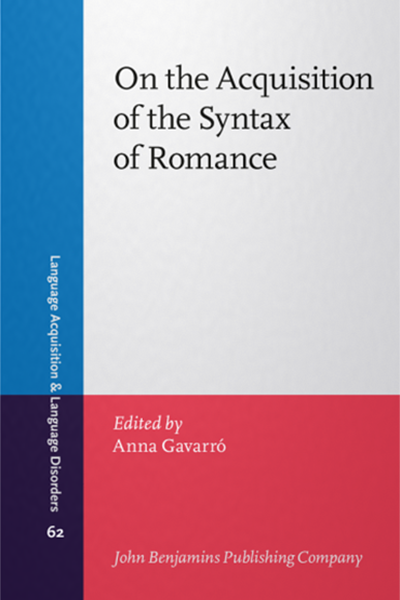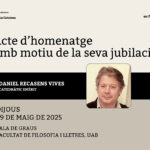4 abril, 2021
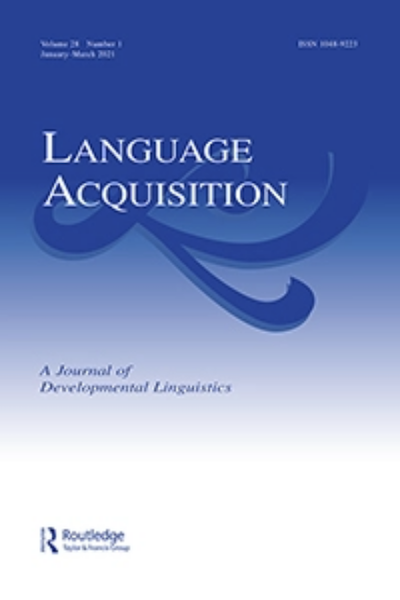
Autors:
Elena Pagliarini, Marta Andrada Reyes, Maria Teresa Guasti, Stephen Crain & Anna Gavarró
Títol:
Negative sentences with disjunction in child Catalan, Language Acquisition 2021Editorial: Routledge
Data de publicació: Gener del 2021
ISBN13: 1048-9223
Més informacióIn English, the sentence Mary didn’t eat pizza or sushi is assigned the neither interpretation (both disjuncts must be false). In Mandarin Chinese, the equivalent sentence is assigned the at least one interpretation (at least one disjunct must be false). The cross-linguistic variation in the interpretation of negative sentences with disjunction has been attributed to the Disjunction Parameter. On one value of this lexical parameter, disjunction is a Positive Polarity Item (+PPI). On the other value, disjunction is not a Positive Polarity Item (-PPI). According to the Semantic Subset Principle (SSP), all child language learners are predicted to initially assign the neither interpretation to negative disjunctive sentences, for reasons of language learnability. The present study investigates the interpretation of negative sentences with disjunction in Catalan. The findings confirm that disjunction is +PPI for adults; children show a bimodal distribution. For some children, disjunction is -PPI, as predicted by the SSP. However, some children adopt the adult +PPI value of the Disjunction Parameter. Children’s level of linguistic maturity, as measured by a sentence repetition task, was correlated with their judgments about negative sentences with disjunction such that children with lower scores tended to adopt the -PPI value. To explain the relatively early parameter resetting by some Catalan-speaking children, as compared to children acquiring other languages where disjunction is +PPI, we discuss the possible “blocking effect” of an alternative lexical expression in Catalan, which unambiguously conveys the neither interpretation.
8 febrer, 2021
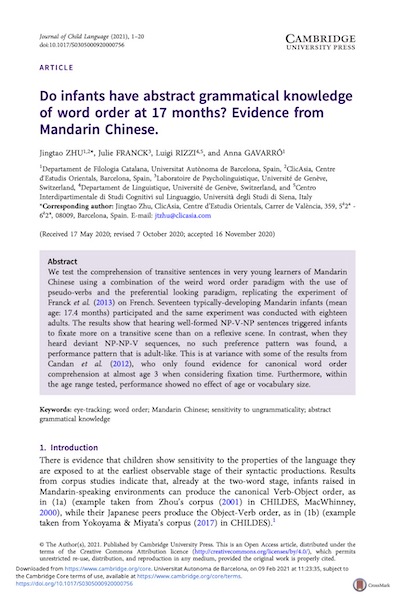
Autors:
Jingtao Zhu, Julie Franck, Luigi Rizzi & Anna Gavarró
Títol:
Do infants have abstract grammatical knowledge of word order at 17 months? Evidence from Mandarin ChineseEditorial: Journal of Child Language, Cambridge University Press
Data de publicació: Febrer del 2021
Més informació
Text completWe test the comprehension of transitive sentences in very young learners of Mandarin Chinese using a combination of the weird word order paradigm with the use of pseudo-verbs and the preferential looking paradigm, replicating the experiment of Franck et al. (2013) on French. Seventeen typically-developing Mandarin infants (mean age: 17.4 months) participated and the same experiment was conducted with eighteen adults. The results show that hearing well-formed NP-V-NP sentences triggered infants to fixate more on a transitive scene than on a reflexive scene. In contrast, when they heard deviant NP-NP-V sequences, no such preference pattern was found, a performance pattern that is adult-like. This is at variance with some of the results from Candan et al. (2012), who only found evidence for canonical word order comprehension at almost age 3 when considering fixation time. Furthermore, within the age range tested, performance showed no effect of age or vocabulary size.
10 juny, 2020

Autors:
Panagiota Margaza & Anna Gavarró
Títol:
Null/overt subject alternations in L2 Spanish and L2 GreekEditorial: Glossa: a journal of general linguistics
Data de publicació: Juny de 2020
Text completThis study aims at exploring the omission/expression of subjects in L2 Spanish and L2 Greek. The distribution of subjects is examined in the context of the Interface Hypothesis (IH), which locates the difficulty of acquisition at the syntax-pragmatics interface (Sorace & Filiaci 2006; Tsimpli & Sorace 2006) and the language combination examined is a case in point as both languages share the null subject property and yet the IH predicts delay in L2 acquisition. We also examine the predictions of Lozano’s (2016) Pragmatic Principles Violation Hypothesis. We designed two multiple-choice tasks, one in Spanish and one in Greek, testing subjects in various pragmatic contexts. The tasks were administered to L2 intermediate and advanced learners and native speakers of Spanish and Greek. The results obtained indicate that the L2 learners were able to select the felicitous type of subjects in the appropriate contexts, although they did not always achieve native-like patterns. An asymmetry arose between L2 Greek and L2 Spanish, as L2 Greek was native-like, an asymmetry that failed to be predicted by any of the hypotheses entertained. Even though the involvement of the interface levels might have affected L2 performance, the syntax-pragmatics interface was not consistently having a detrimental effect on the results. Furthermore, our results with the control group indicated that the subject distribution in adult Greek is more nuanced than reported in the literature, especially in unambiguous referent-shift contexts.
17 desembre, 2019
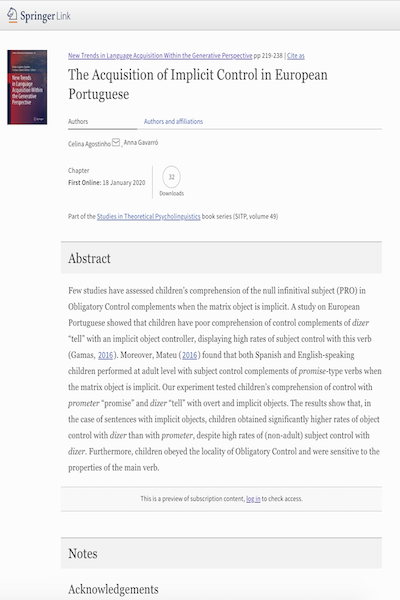
Autors:
Celina Agostinho & Anna Gavarró
Títol:
New Trends in Language Acquisition Within the Generative PerspectiveEditorial: Springer
Data de publicació: 18 de gener del 2020
Més informacióFew studies have assessed children’s comprehension of the null infinitival subject (PRO) in Obligatory Control complements when the matrix object is implicit. A study on European Portuguese showed that children have poor comprehension of control complements of dizer “tell” with an implicit object controller, displaying high rates of subject control with this verb (Gamas, 2016). Moreover, Mateu (2016) found that both Spanish and English-speaking children performed at adult level with subject control complements of promise-type verbs when the matrix object is implicit. Our experiment tested children’s comprehension of control with prometer “promise” and dizer “tell” with overt and implicit objects. The results show that, in the case of sentences with implicit objects, children obtained significantly higher rates of object control with dizer than with prometer, despite high rates of (non-adult) subject control with dizer. Furthermore, children obeyed the locality of Obligatory Control and were sensitive to the properties of the main verb.
